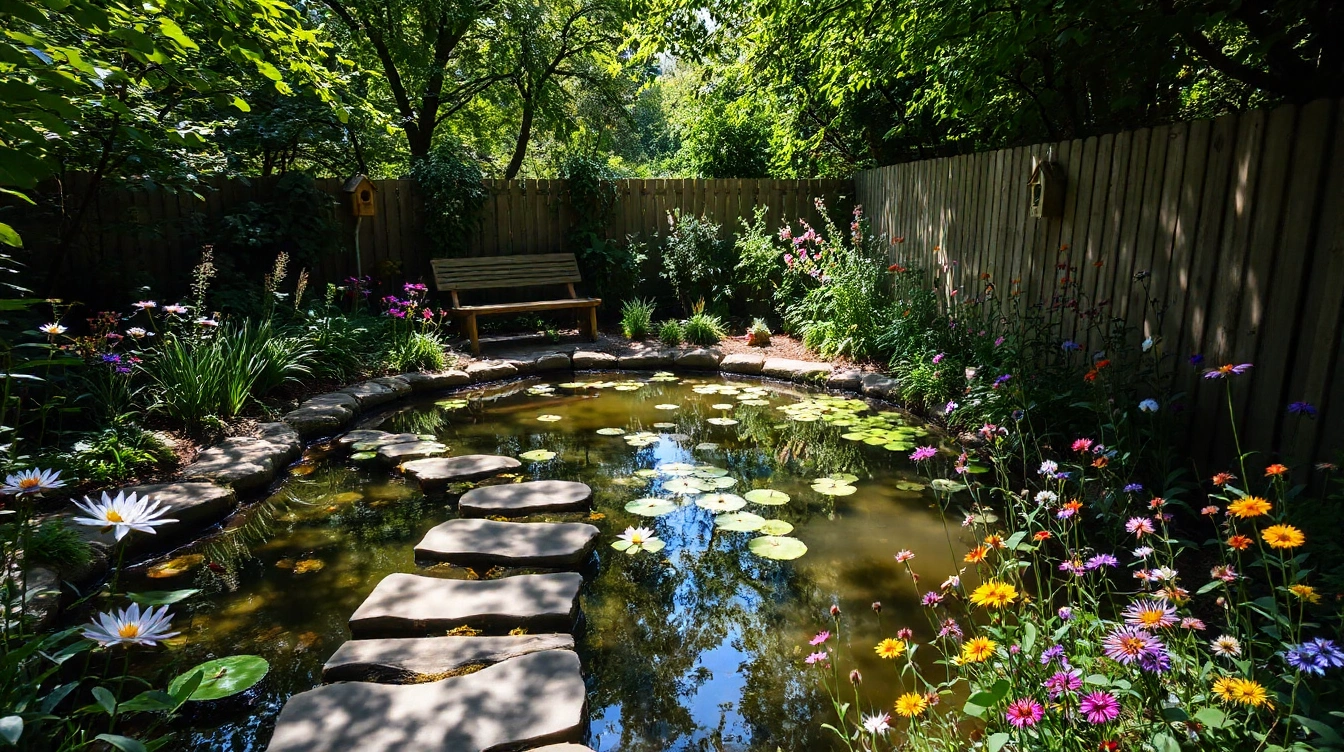Essential Steps to Start Transforming Your Small UK Garden
Understanding the foundation of wildlife garden basics
Begin by assessing your garden’s existing features and wildlife potential. Take note of soil type, sunlight, and any native plants or habitats already present. This step is crucial in identifying opportunities and challenges specific to your space and supports informed decisions about integrating UK native species. Recognizing current wildlife activity helps align your efforts with local ecosystems.
Have you seen this : How Can You Transform Your Small Patio Into a Cozy Retreat?
Next, plan a garden layout that maximises biodiversity within small garden transformation constraints. Use vertical planting, layered vegetation, and varied flowering times to support diverse species year-round. Incorporating habitats like bird boxes or log piles adds shelter and encourages native fauna. This eco-friendly gardening approach boosts resilience and promotes natural balance.
Set clear, achievable goals focused on wildlife-friendly and sustainable practices. These might include increasing native plant coverage, reducing chemical use, or enhancing pollinator habitats. Defining such objectives guides your actions and measures progress effectively. Remember, small garden transformation thrives on thoughtful planning that nurtures both plants and wildlife harmoniously.
Also to see : What Creative DIY Projects Can Transform a Small UK Garden?
Choosing and Planting UK-Native Species
Understanding how to select and arrange native plants for nature’s benefit
Opting for native plant recommendations is essential to support local ecosystems effectively. UK plants for wildlife have co-evolved with native birds, bees, and butterflies, making them the best choice for sustaining these populations. Species such as hawthorn, blackthorn, and native wildflowers provide year-round food sources like berries, nectar, and pollen, crucial for wildlife throughout seasons.
Planting with pollinator-friendly plants ensures that bees and butterflies have continuous access to nectar. Examples include purple loosestrife and delicate oxeye daisies, which also add a splash of color. Incorporating native trees such as rowan or silver birch gives shelter and nesting sites, vital for bird species.
Arranging these plants thoughtfully enhances visual appeal and maximizes habitat benefits. Layering with taller native trees at the back, medium shrubs in the middle, and wildflowers up front creates a natural progression attractive to wildlife and pleasing to the eye. Remember, a diverse mix supports biodiversity more robustly than monocultures.
By choosing UK-native species wisely, gardeners can foster a lively, flourishing habitat that supports nature’s intricate balance. This careful selection and placement are central to thriving wildlife-friendly gardens.
Creating Diverse Habitats for Wildlife
Enhancing your outdoor space for thriving UK garden wildlife
Creating a garden habitat rich with variety supports a wide range of UK garden wildlife. One effective way to do this is by installing a wildlife pond. Ponds attract amphibians like frogs and newts, provide water for birds, and serve as a home for diverse insects such as dragonflies. Even a small, carefully maintained pond can greatly increase the biodiversity of your garden.
In addition to water sources, log piles and stone stacks offer essential shelter. These features create safe havens for insects, spiders, and small mammals. Bug hotels complement these by providing specialized nesting spaces for solitary bees and beneficial insects, crucial for pollination. Building these structures mimics natural conditions, offering protection from predators and harsh weather.
To further support wildlife, it is important to provide safe nesting and hibernation sites. Features such as hedgehog houses and undisturbed leaf litter encourage hedgehogs and hibernating insects to settle. These efforts make gardens a refuge rather than just a beautified space, significantly boosting the survival and wellbeing of many species native to the UK.
Sustainable and Eco-Friendly Gardening Practices
Sustainable gardening focuses on creating a healthy garden ecosystem with minimal environmental impact. One key aspect is pesticide alternatives. Instead of harmful chemicals, gardeners can use natural pest control methods such as introducing beneficial insects like ladybirds or using neem oil. These alternatives protect plants without damaging beneficial wildlife or soil health.
Composting is another cornerstone of sustainable gardening. By starting composting, gardeners recycle kitchen scraps and garden waste into nutrient-rich soil. This enriches soil naturally, reduces landfill waste, and decreases dependency on synthetic fertilizers. Using compost improves soil structure and water retention, making plants healthier and more resilient.
Water conservation is crucial, especially in small UK gardens. Simple water-saving tips include watering early in the morning or late evening to reduce evaporation. Collecting and utilizing rainwater with barrels or water butts is an effective method to reduce tap water use, lowering utility bills and environmental strain. Incorporating drought-tolerant plant species also minimizes water demand.
Together, these sustainable gardening practices support a thriving garden ecosystem, conserve resources, and foster long-term environmental benefits. Embracing such techniques connects gardeners directly with nature’s cycles, promoting a greener and more manageable gardening experience.
Attracting and Supporting a Range of UK Wildlife
Creating a garden that is welcoming to birds, bees, and hedgehogs relies on thoughtfully incorporating wildlife-friendly features. Start by attracting birds with feeders filled with seeds suited to local species and clean birdbaths that offer fresh water. These simple additions encourage frequent visits, providing both nourishment and hydration.
To support bees, introduce a bee hotel—a small structure filled with tubes or holes where solitary bees can nest safely. Complement this by planting a variety of nectar-rich flowers through the seasons, ensuring continuous food supply. This sustains bee populations and promotes pollination crucial to garden health.
For hedgehogs, provide shelter by leaving undisturbed piles of leaves and logs or installing purpose-built boxes. Ensure there are safe, accessible pathways connecting your garden to adjacent green spaces, allowing hedgehogs to roam safely in search of food.
Achieving a balance for ongoing wildlife attraction demands maintenance: regularly clean feeders and birdbaths to prevent disease, refresh food supplies, and monitor for predators or hazards. With consistent care, wildlife-friendly features create a thriving, diverse habitat, turning even small gardens into lively sanctuaries for Britain’s cherished wild visitors.
Example Layouts and Practical Design Tips for Small Gardens
Optimizing small space wildlife garden design in the UK
Designing a small space wildlife garden in the UK requires thoughtful planning to maximize limited areas like patios or balconies. One effective example layout includes layering plants vertically using trellises or wall-mounted planters. This approach provides shelter and food for insects and birds without sacrificing floor space, ideal for urban garden planning.
In a typical small garden setup, dedicate a corner to native wildflowers that attract pollinators. Combine this with a shallow water feature and some log piles to support amphibians and insects. Seasonal rotation is key: plant bulbs in autumn for spring blooms, followed by summer nectar-rich flowers to sustain butterflies and bees.
For patios and balconies, lightweight containers filled with drought-tolerant native species ensure year-round wildlife support without heavy soil. Using bird feeders and insect hotels incorporated into the design adds further attraction for urban wildlife.
By adapting these example layouts to your available space and considering the UK’s temperate climate, you create a thriving small space wildlife garden design that actively benefits local biodiversity throughout the year. Such garden planning balances beauty and function, transforming even the smallest outdoor space into a wildlife haven.









